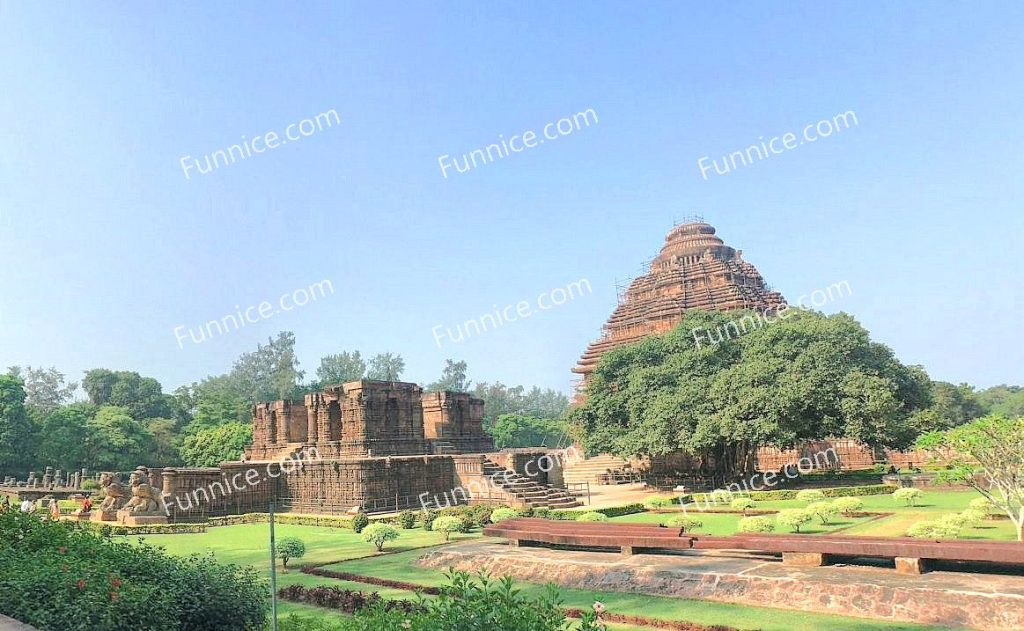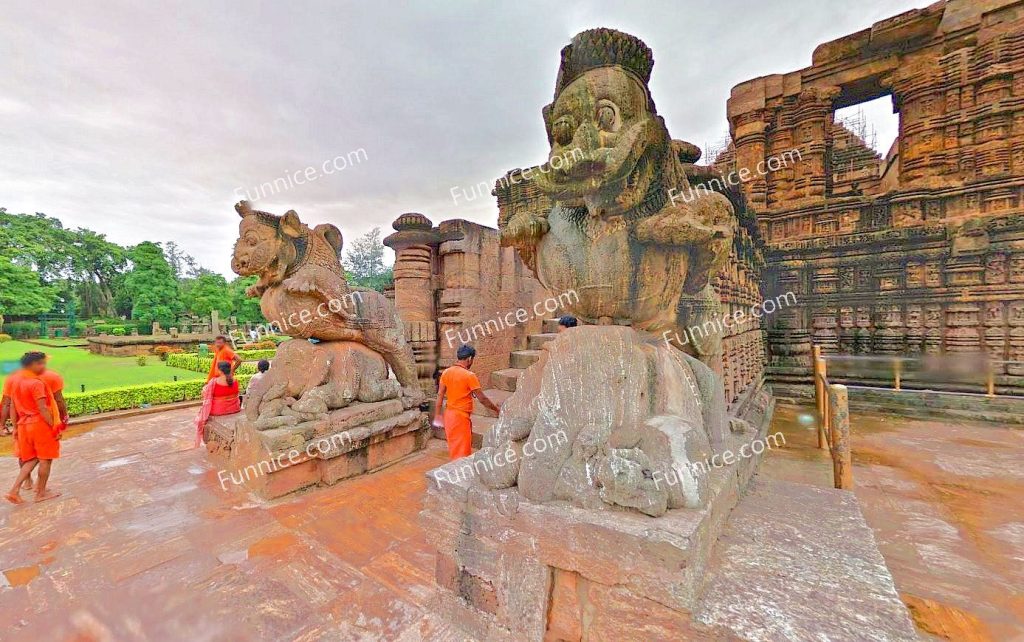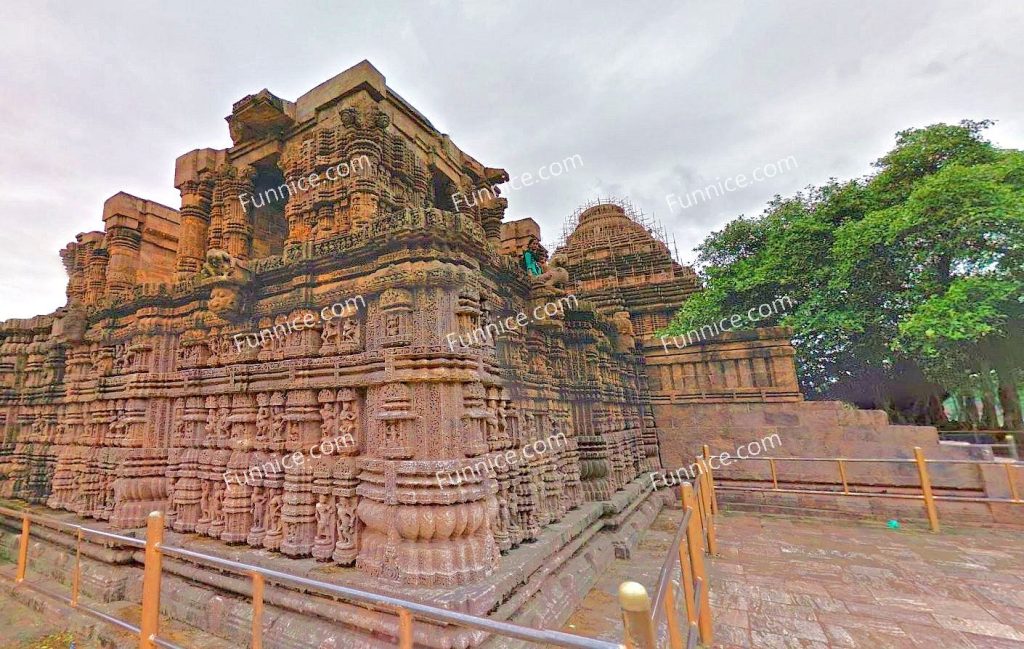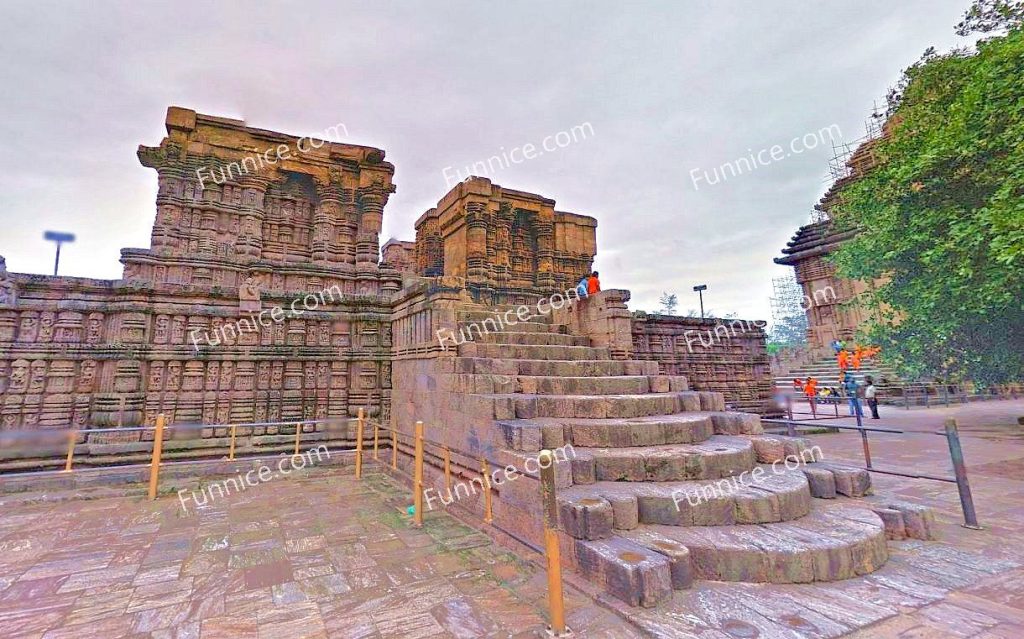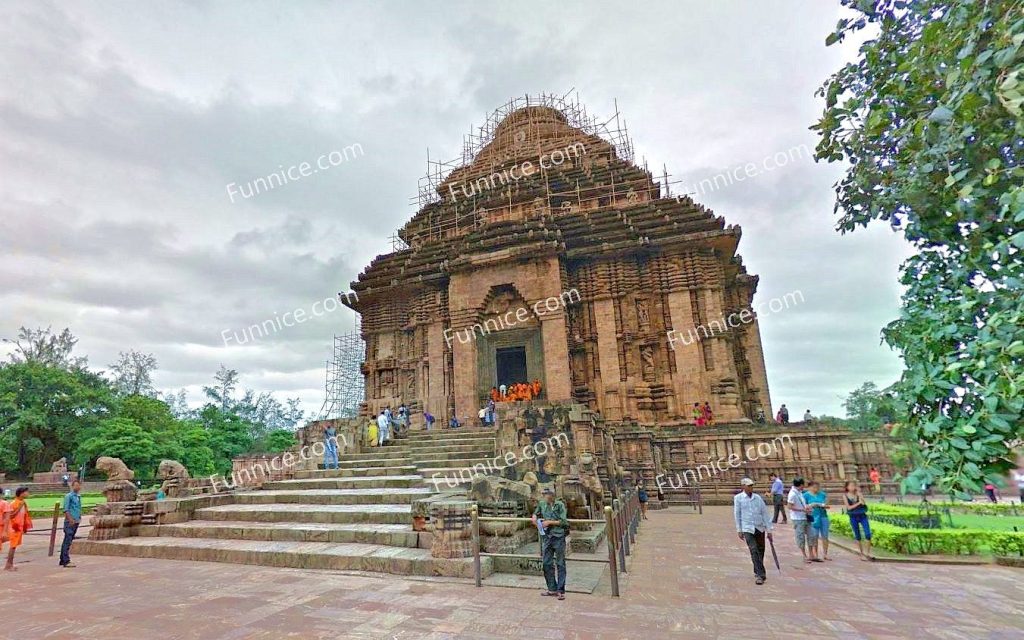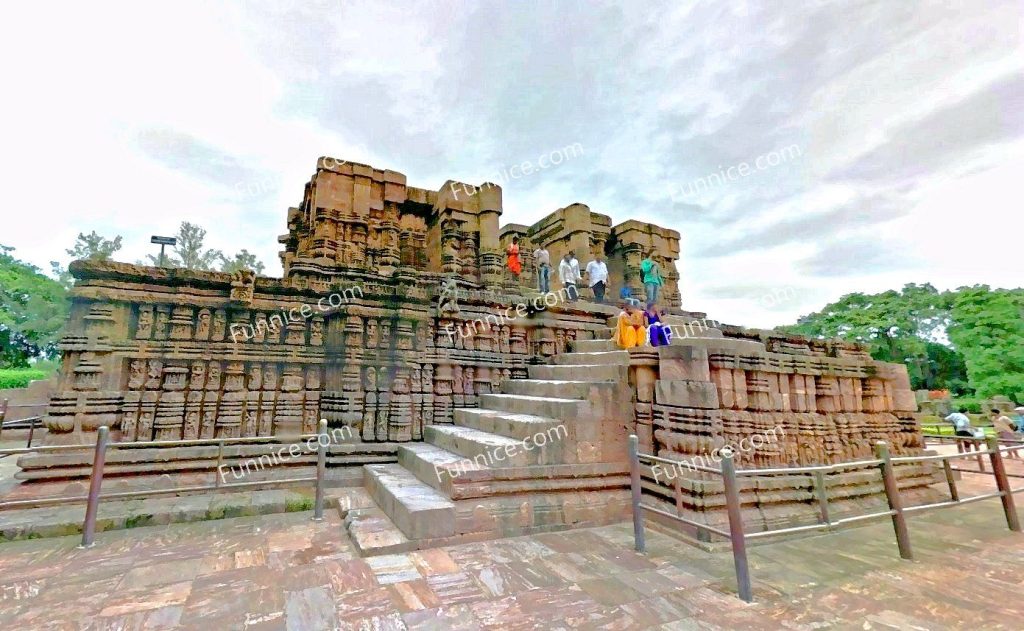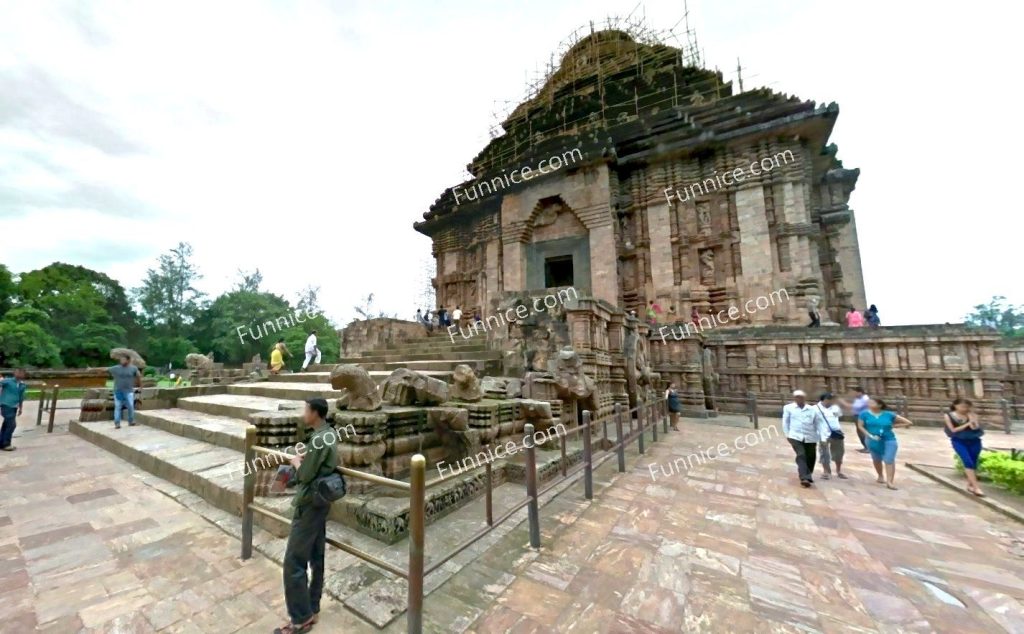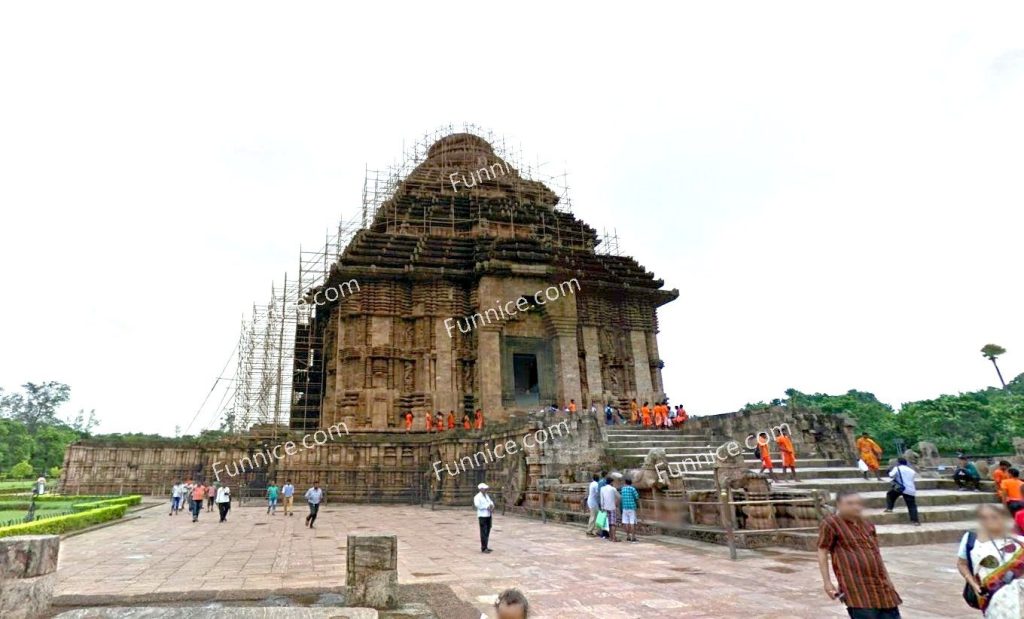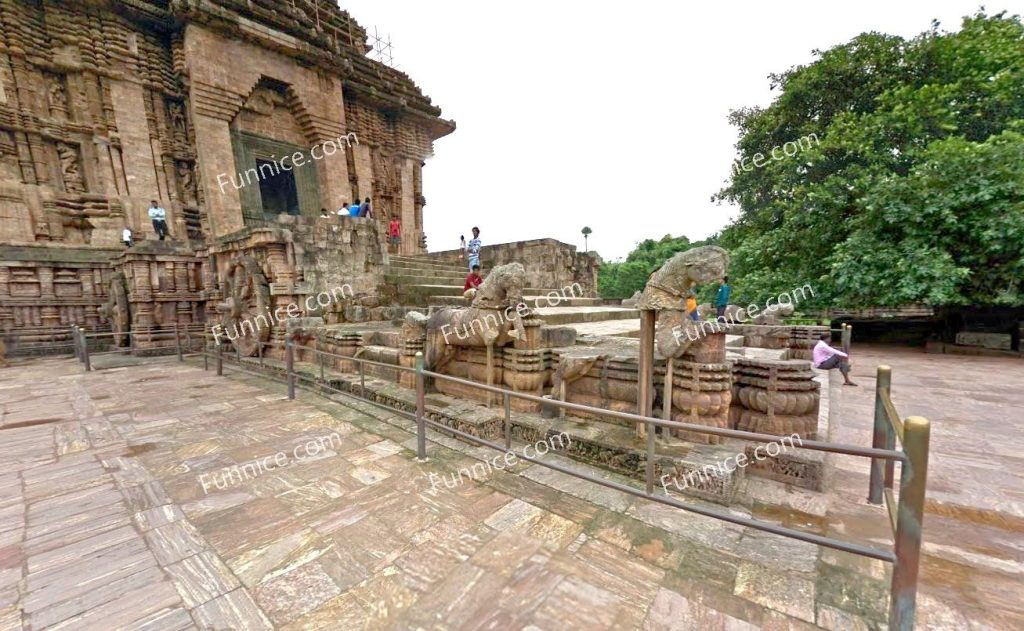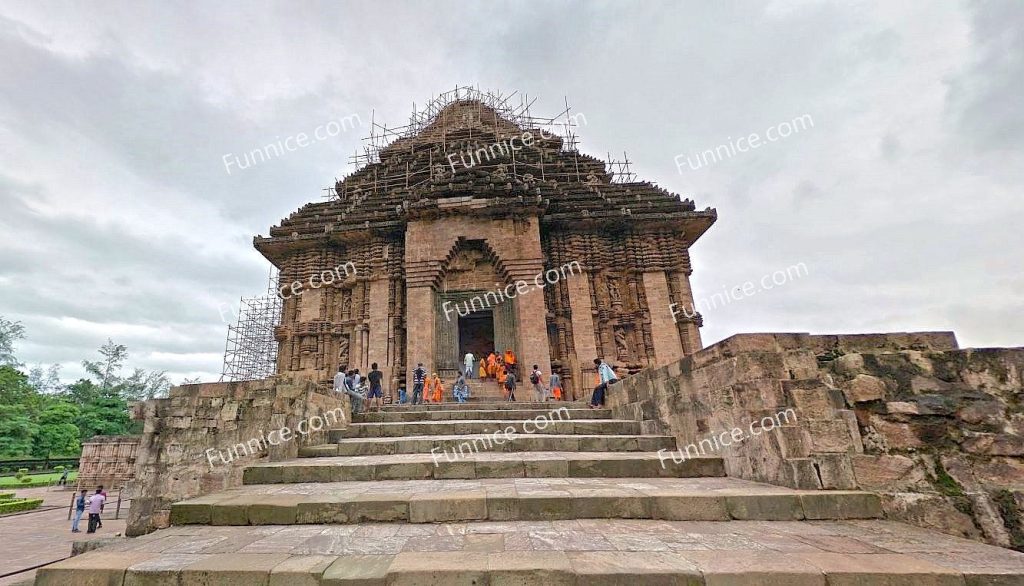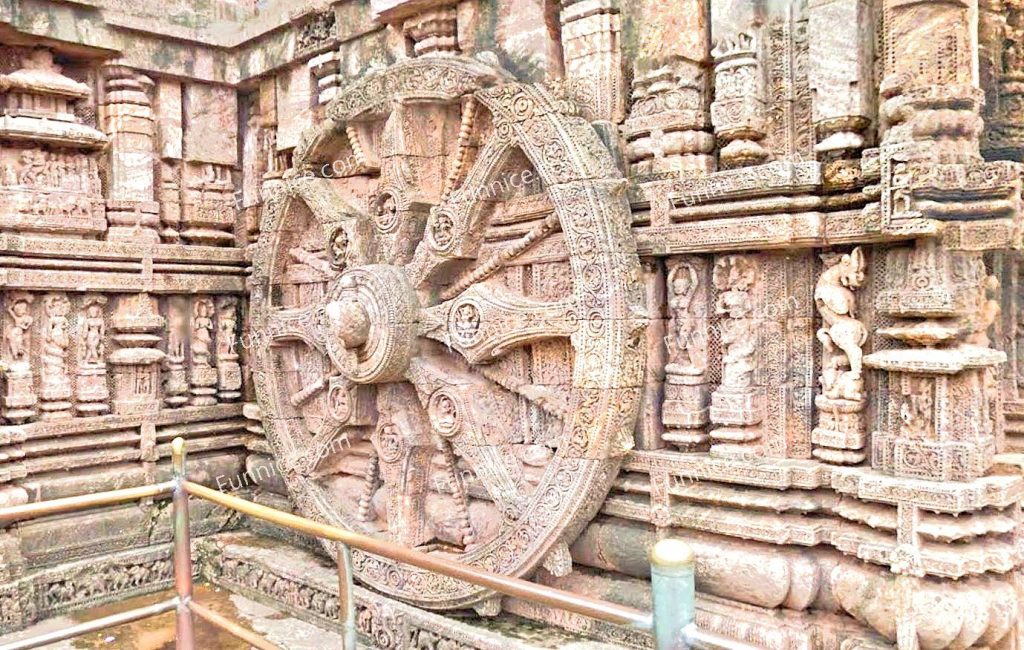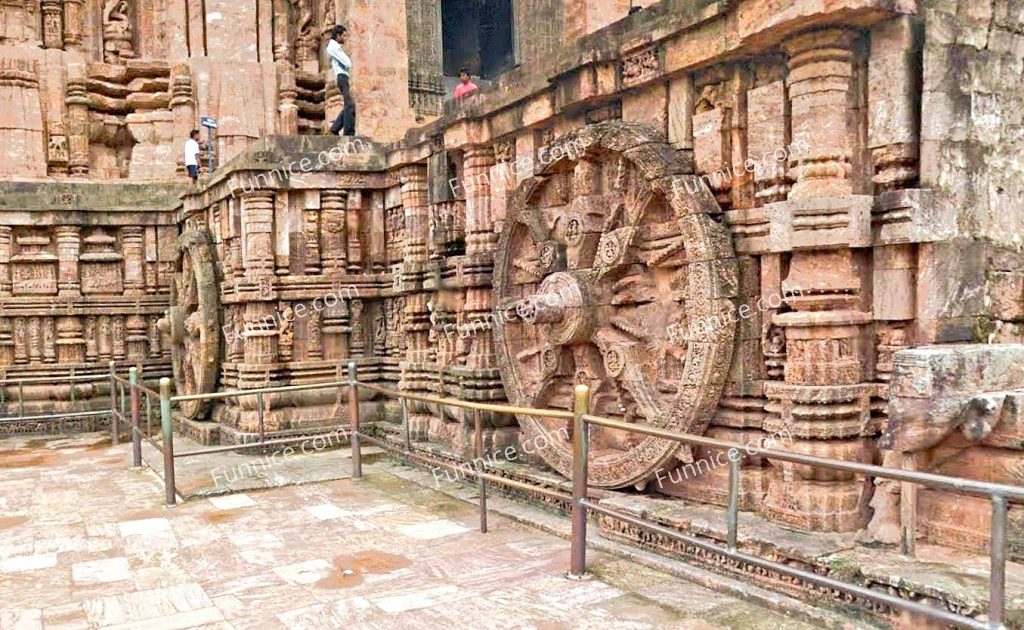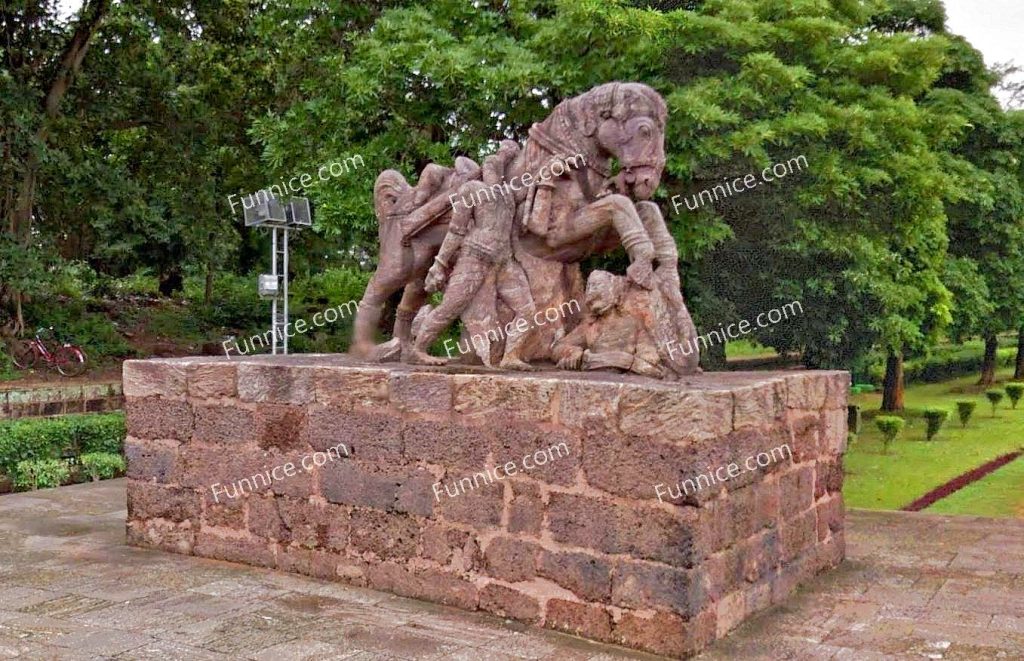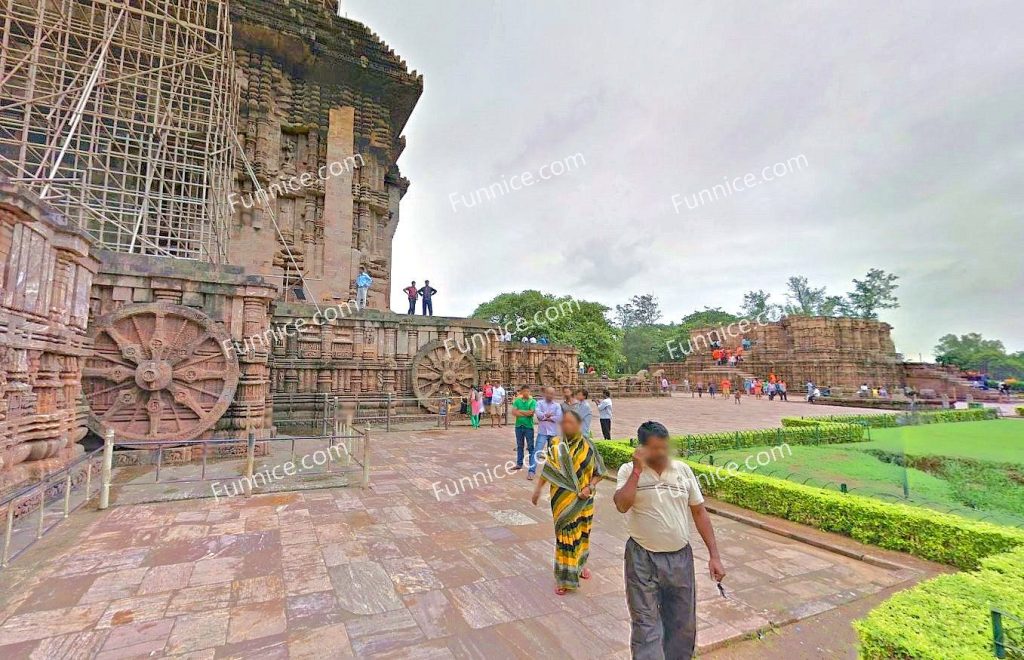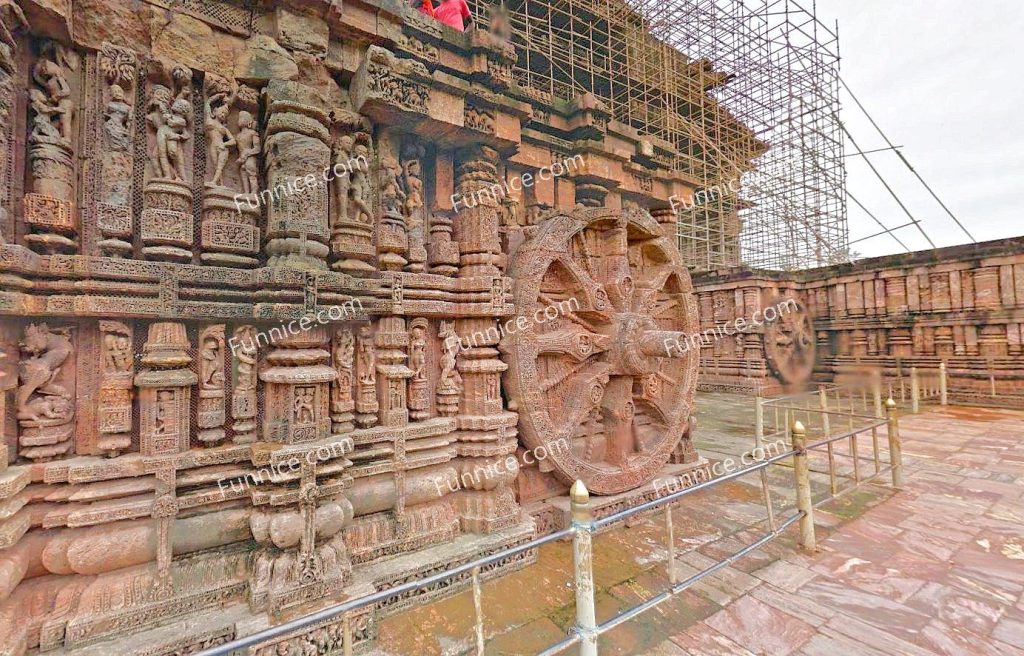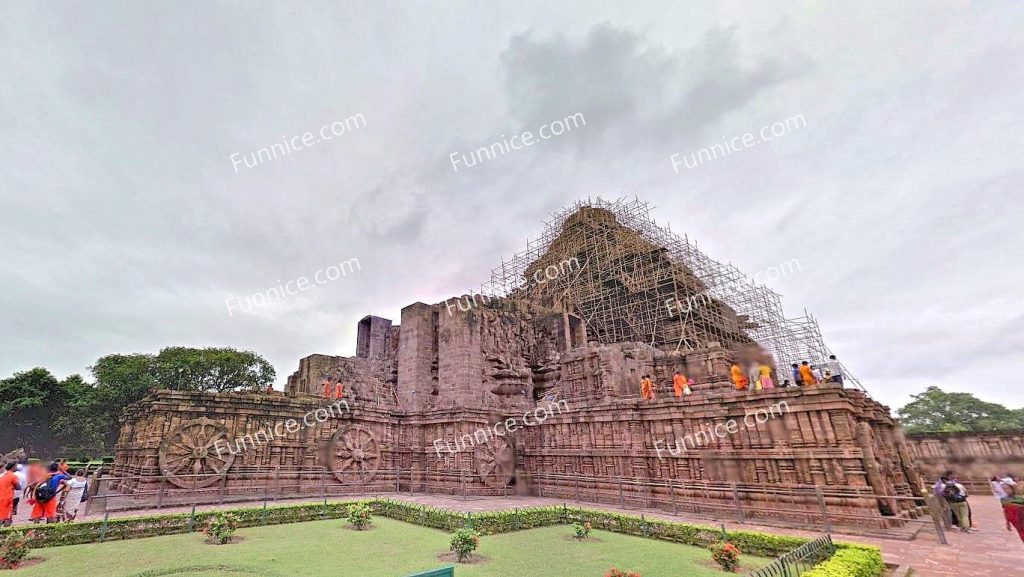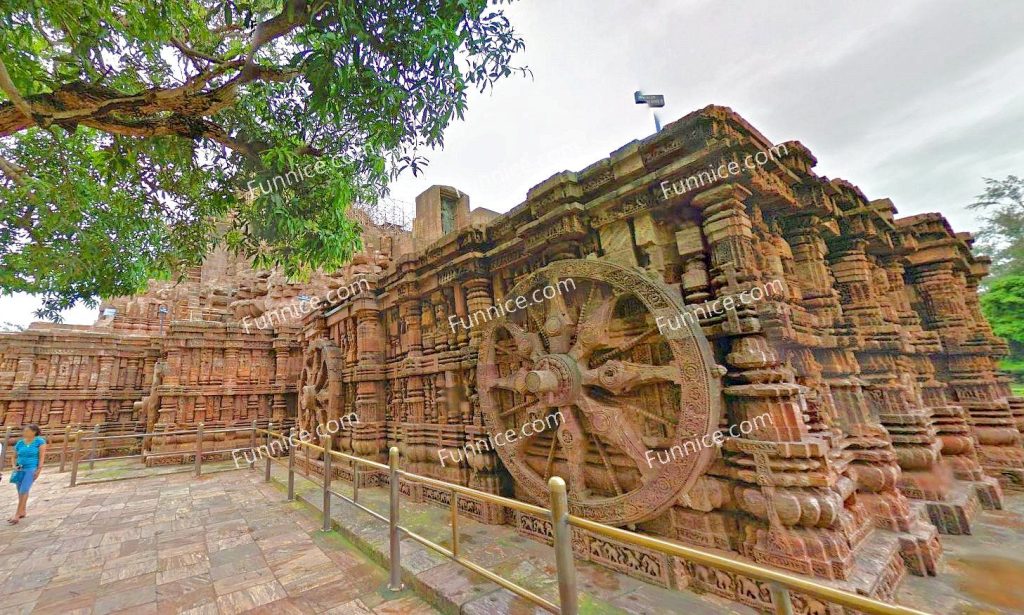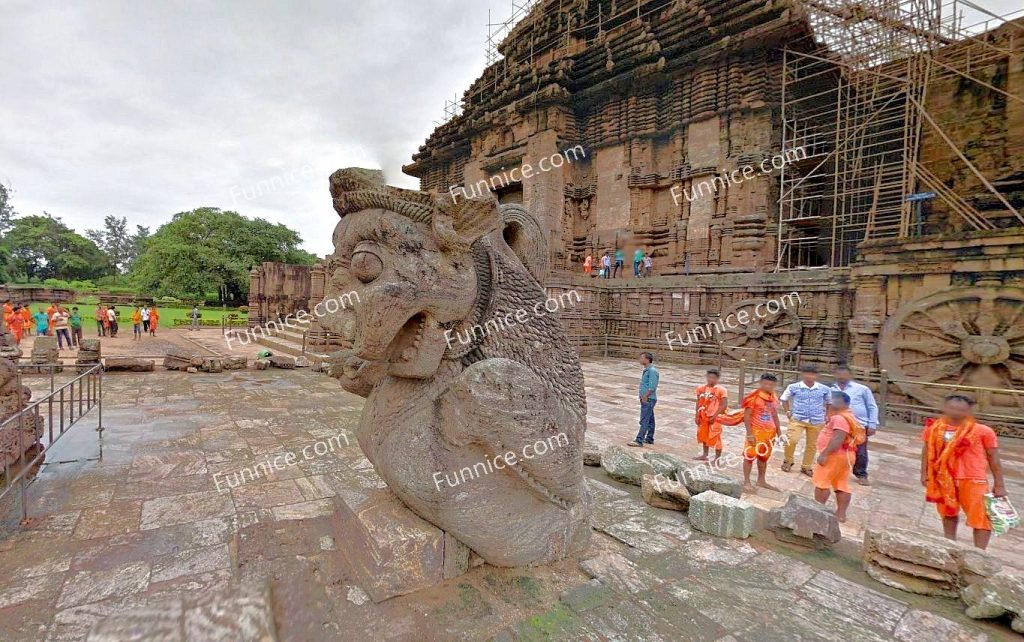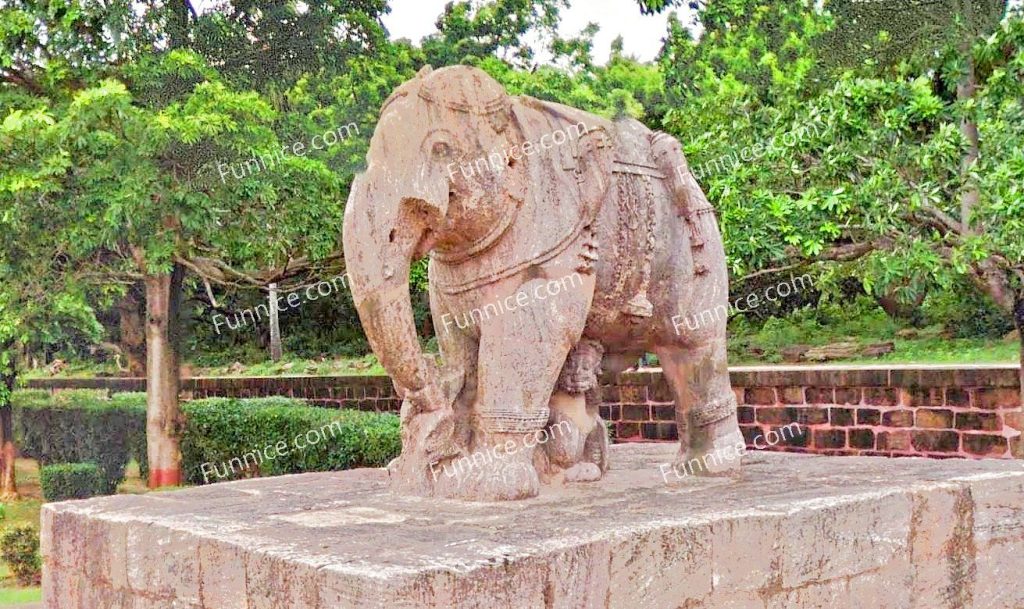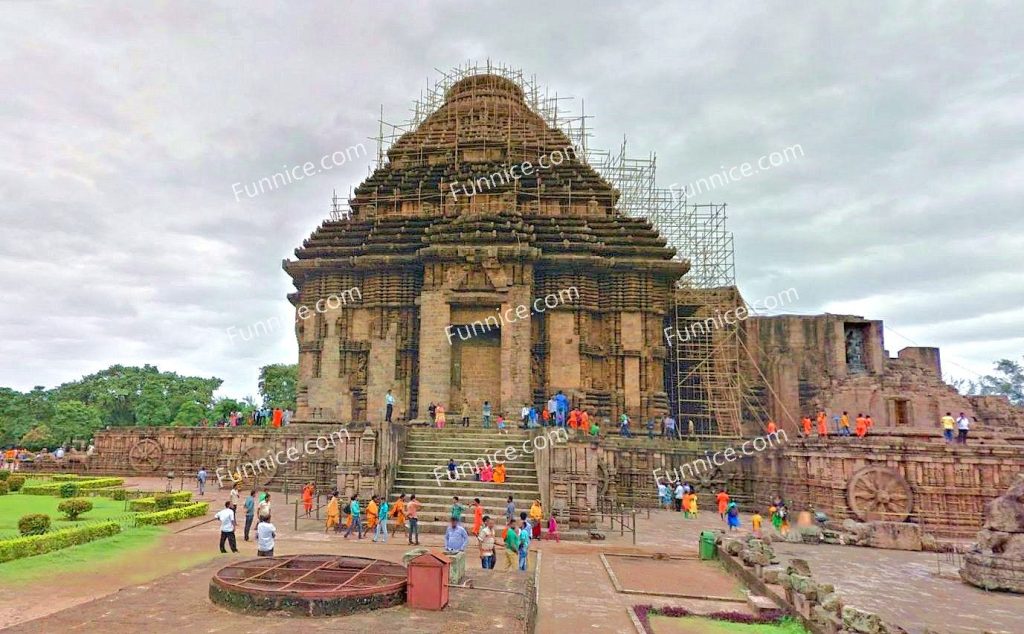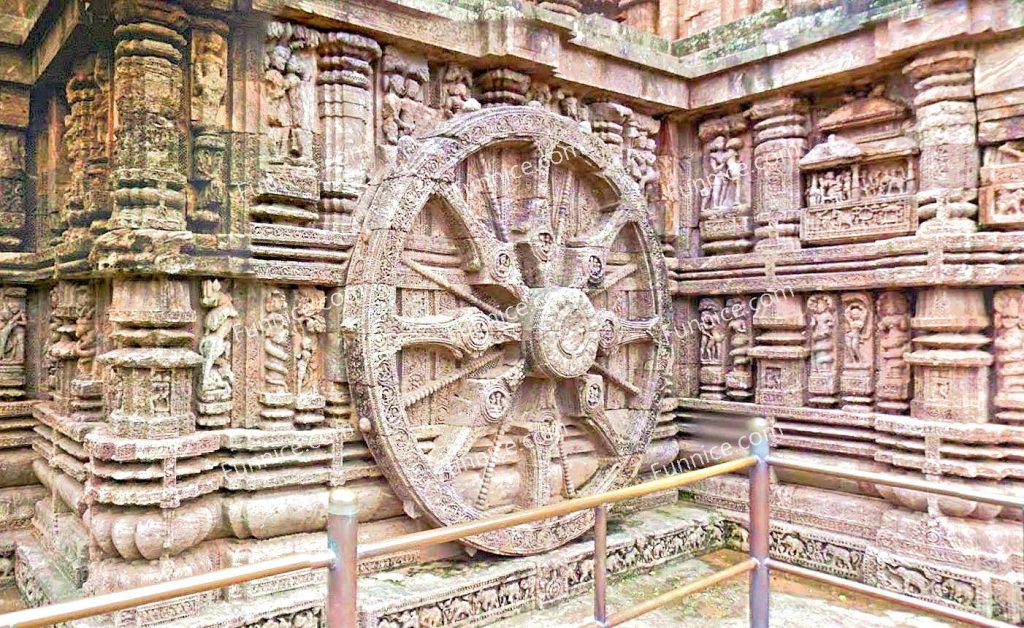The Konark Sun Temple, located in Konark (Sanskrit: कोनार्क, Konark or Konarak) in the eastern Indian state of Odisha, near the Bay of Bengal, is one of the most spectacular religious structures in India. Built in the 13th century by King Narasimhadeva I of the Kalinga dynasty, this magnificent temple is dedicated to Surya, the Sun God, and is an important Brahmanical pilgrimage site. In 1984, the Konark Sun Temple was designated a UNESCO World Heritage Site, recognized as a masterpiece of Indian architecture and sculpture.
Architectural Features
The entire structure of the Konark Sun Temple is designed to resemble a gigantic stone chariot of the Sun God, complete with 12 pairs of wheels (24 in total) and seven horses pulling it, symbolizing the Sun God’s journey across the sky. These intricately carved wheels are not merely decorative but also function as sundials, accurately measuring time. The temple spans 857 feet in length and 540 feet in width, with its main entrance facing northeast to welcome the first rays of the rising sun.
Although the main sanctum (Vimana) has collapsed, parts of the structure remain, including the assembly hall (Jagamohan) and remnants of the dance hall (Nata Mandir). Inside the temple, three statues of Surya are enshrined, each representing the Sun at morning, noon, and evening, reflecting the temple’s devotion to the celestial deity.
Exquisite Sculptures
The sculptural art of the Konark Sun Temple is exceptionally detailed, encompassing themes of mythology, history, religion, and daily life.
The lower tier of carvings features 1,452 unique elephants, with some depicting the king riding an elephant under a parasol held by an attendant, while others showcase warriors wielding swords and shields as they charge into battle. Scenes of hunters pursuing deer and pilgrims preparing meals along their journey are also depicted. One particularly touching relief shows an elderly woman blessing her son, as her daughter-in-law kneels before her and her grandson leans against her affectionately, illustrating the warmth of Indian family life.
The middle tier carvings include mythical creatures such as lion-headed elephants, lion-headed humans, and Nāga Manasa, serpent-like beings believed to guard treasures in the depths of the sea.
The uppermost tier is famous for its erotic sculptures, similar to those found in the Khajuraho temples, depicting various forms of human intimacy. These carvings illustrate the ancient Indian view of fertility, passion, and cosmic harmony. The intricate details of the human body, such as the sculpting of muscles and posture, reflect a profound knowledge of anatomy, as seen in the carving of a man lifting a woman while she wraps her arms around his neck.
Sanctuary Interior and Construction
The temple floor is constructed of chlorite stone and slightly sloped northward for drainage. The ceiling features a five-foot-wide carved lotus with dancers and Surya seated in his chariot drawn by seven horses, holding lotus flowers in both hands.
Due to the temple’s vast expanse, massive iron beams were used to reinforce the structure, each measuring 40 feet in length and 9 inches in diameter. These beams were initially made in smaller segments and later forged together, showcasing the advanced metallurgical techniques of the time.
At the temple’s heart lies a black chlorite throne, measuring 11 feet x 7.6 feet x 4.8 feet, which served as the sacred seat of Surya. The throne bears carvings of animals and a depiction of King Narasimhadeva I worshiping the Sun God with his entourage. A set of three surviving steps leads up to this throne. Over time, some sections of the throne have been damaged by fallen temple stones, evident from the visible restoration work.
Surroundings and Preservation
The temple is surrounded by jute plants and coastal vegetation, growing in the sandy terrain, while rolling low hills in the distance add to the scenic beauty. Despite centuries of natural erosion and historical turmoil, the Konark Sun Temple remains one of the most visited cultural heritage sites in India. Every December, the Konark Dance Festival is held here, celebrating the rich tradition of Indian classical dance and further preserving the temple’s artistic and cultural significance.
The Konark Sun Temple is not just a place of worship but a marvel of architecture, sculpture, and astronomy—an enduring testament to the grandeur of ancient Indian civilization.
